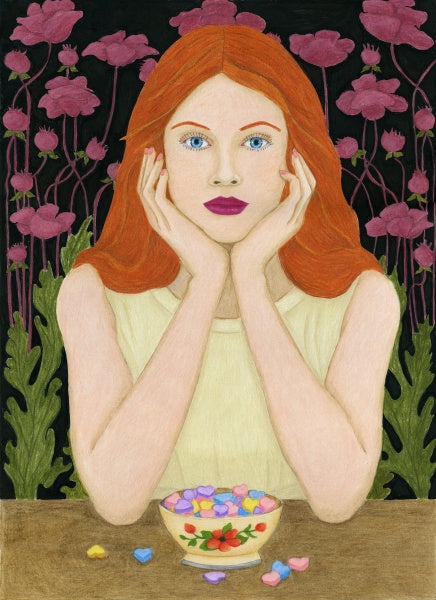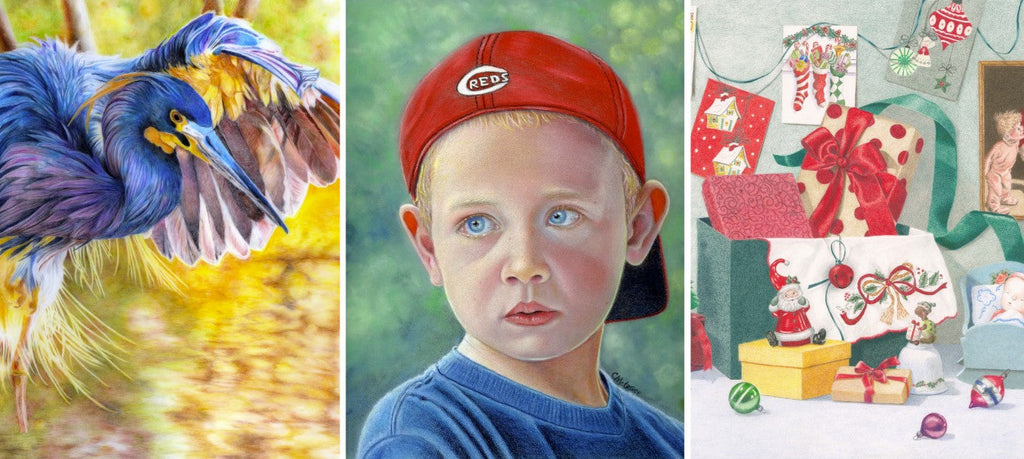Creating Key Poses For An Animated Kingfisher Dive In Colored Pencils
by Vivek Prabhu
In the month of June 2020, when I was completing my nine-minute animated short film, I got hooked on the idea of doing a series of paintings with kingfisher diving for its catch in colored pencils.
Most important things to follow in doing a small animation clip are:
1. Observation phase: Physical actions are something we need to analyze before animating. One assumes that we know what an action looks like just because we’ve seen it before. Looking at an action as an animator is completely different than looking at it as a regular viewer.
2. The planning phase: after analyzing, it is time to create poses known as key poses and in-betweens. Key poses are the most important poses of the shot as they convey the story of the shot. We should make sure we get these poses right, because we’re going to build on these for the rest of the process. In-betweens are what fill in between Key Poses. For a Character to get from Key Pose A to Key Pose B, there are In-betweens which affects the timing, spacing of the action. Both these poses are initially done as thumbnail sketches.
3. Testing the key poses: The thumbnail sketches are scanned and brought into software to test how the action is working. You can fine tune your character pose, if needed.
4. Adding life: The thumbnail sketches are used as the reference to do character design and add appropriate backgrounds to it.
5. Adding sound: The finished drawings are scanned and brought into software. The background sounds necessary for the clip are added to complete the animated clip.
OBSERVATION - First and foremost I had to do was studying how a Kingfisher moves or dives to have its catch. Various segments from different documentaries on You-tube helped me to piece together the action. These videos became the foundation for me to build the scene composition and series.
Once the kingfisher detects its food, plunges with the poise of an Olympic diver steeply down into the water to seize its prey. The wings start opening out as it reaches the water surface, remain opened underwater and the eyes are protected by the transparent eyelid. The bird picks up the prey and rises beak-first from the surface and flies back with its prey.
KEY POSES - The images (Figure1:key poses thumbnail sketches) shown below are the initial thumbnail pencil sketches of the Kingfisher’s key poses which shows how it dives into the water to catch its prey and flies back.
Key poses thumbnail sketches
TEST - Each drawing is followed by a new pose. These initial hand drawn sketches were scanned and put into software to test the animation. I had to fine tune some of the initial sketches made so that kingfisher’s dive was in sync.
ADDING LIFE - Once the key poses were as per my satisfaction. I began drawing the kingfisher’s dive in detail on Canson 200gsm A4 white paper using the Key pose rough sketches as reference and also added the necessary backgrounds to it. 
WIP- Key poses
In traditional animation, we have one background in a layer for the entire sequence, Different overlay layers for the water bubbles, splash, lotus and a different layer for character poses. But here since it is a fully painted animated clip, all these would come in a single layer, on a sheet of paper. Now I have eight drawings to be fully colored. To begin with, I colored the kingfisher characters on all eight drawings leaving the water bubbles and the splashes to be finished at the end. My big challenge was to maintain the backgrounds of all the eight drawings to be almost same. So I avoided doing too many details on the backgrounds. For backgrounds of all the drawings, I colored one layer with pan pastels as the base and then finished it with multiple layers in colored pencils. I used Faber-Castell Polychromos, and Derwent Lightfast pencils in coloring the drawings.
Key poses
After finishing the key pose drawings and animating them, felt it needs some more In-betweens to be added to complete the animated clip. I am going to add 6 more drawings as in-betweens, one drawing of the bird flying away fish at the end and complete the clip with background sounds.
ABOUT VIVEK PRABHU:
A self-taught artist living in Mysore, India. Vivek Prabhu took up coloured pencils in mid 2018. His work is inspired by anything that is beautiful in the natural world and It reflects in his art work. He has exhibited both locally and nationally. He has been a member of U K colour pencil society since 2019. His work has been exhibited in UKCPS Juried open exhibition in 2019 and 2020. He has done many commissioned works since 2012.
See more at: www.facebook.com/whisperingcolors




